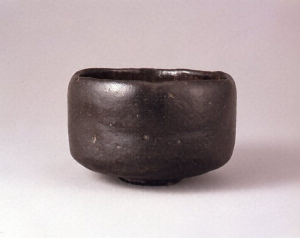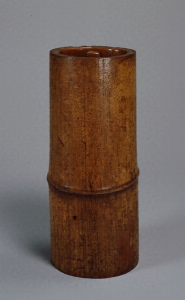
http://bunka.nii.ac.jp/heritages/detail/166215
Wabi sabi (侘び寂び) is a Japanese sense of aesthetics that finds beauty in the natural, imperfect, incomplete, and impermanent.
It’s not easy to define, even for the Japanese. But it brings a sense of melancholy and longing.
For example, the inside of a Japanese tea room is very simple, unadorned, and rustic.
It has a low ceiling and there is no furniture inside. But being inside this austere space, one can feel its profound beauty.
History of wabi sabi
Wabi sabi has its roots in Buddhism, which states that all things are impermanent.
Nothing lasts, there is always a state of change so that decay is inevitable.
Objects that suggested the passing of time began to be appreciated by Zen monks.
The monk Ikkyū is said to have linked Zen and tea in Japan, and also advocated the austerity of monastic life in teaware.
Ikkyū’s pupil Jukō began the wabicha style of the tea ceremony, which emphasized simplicity.
This style of the tea ceremony would be passed down to Takeno Jōō and finally Sen no Rikyū perfected it.
The tea ceremony is the main exponent of wabi sabi. But it is also found in most of the arts of Japan.
Thanks to the popularity of the tea ceremony, wabi sabi spread to other areas such as poetry, bonsai and honkyoku music.
Wabi and sabi are two different words, but now they are used as one.
Each word used to have a different meaning before, but I don’t want to add confusion with those older meanings.
Wabi is the sense of finding sufficiency out of the rustic and insufficient.
Sabi means elegant simplicity.
More about wabi sabi

http://bunka.nii.ac.jp/heritages/detail/266717
Wabi sabi can be seen in tea utensils that have irregular shapes. That is, they aren’t symmetrical.
Not only that, but the material itself shows signs of aging.
In traditional Japanese gardens you won’t find lots of beautiful flowers. That would be too showy.
Instead, you will easily find moss. It evokes the natural passage of time.
In the West, antiques are often prized because of historic value.
But in Japan, the wabi sabi aesthetic values not just time by itself but rather the interaction of nature with an object as time passes.

February 27, 2019
Good post!
February 27, 2019
Thank you David, good to hear that you liked it.